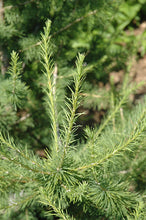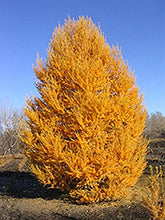The Siberian Larch is a deciduous conifer with a unique appearance. It typically has a slender, pyramidal shape when young, maturing into a broader, more rounded crown as it ages. The tree features soft, blue-green needles that turn golden-yellow in the fall before dropping, adding a stunning display of color to the landscape. Its bark is rough and furrowed, adding texture to its overall aesthetic.
- Size:In optimal conditions, Siberian Larch trees can reach impressive heights of 50 to 80 feet (15 to 24 meters) with a spread of 20 to 40 feet (6 to 12 meters). However, growth rates can vary depending on environmental factors such as soil quality, moisture levels, and climate.
- Location: Plant your Siberian Larch in a location with full sun to partial shade. Ensure it has enough space to spread its roots and grow to its full size without obstruction.
- Soil: The tree prefers well-draining soil that is slightly acidic to neutral. However, it can tolerate a wide range of soil types, including sandy, loamy, or clay soils, as long as they are not waterlogged.
- Watering: While the Siberian Larch is drought-tolerant once established, it benefits from regular watering, especially during dry periods, to promote healthy growth. However, be cautious not to overwater, as this can lead to root rot.
- Mulching: Apply a layer of organic mulch around the base of the tree to help retain soil moisture, suppress weeds, and insulate the roots against temperature fluctuations.
- Pruning: Prune your Siberian Larch as needed to remove dead, damaged, or diseased branches and to shape the tree to your desired aesthetic. Pruning is best done during the dormant season in late winter or early spring.
- Fertilizing: Generally, Siberian Larch trees do not require regular fertilization if planted in nutrient-rich soil. However, if growth appears stunted or foliage appears pale, you can apply a balanced, slow-release fertilizer in early spring.
- Pest and Disease Control: Siberian Larch trees are relatively resistant to pests and diseases. However, occasional monitoring for common issues such as aphids, scale insects, and fungal diseases like rust can help maintain the tree's health.




